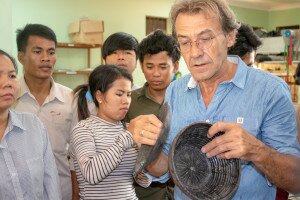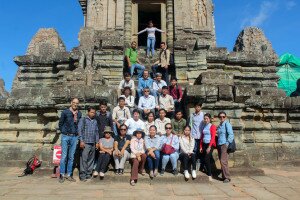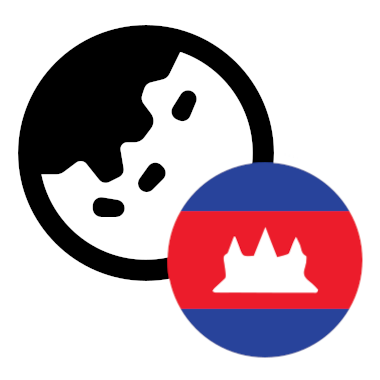
Master lacquerer (Eric Stocker) explaining the different layers required during application of natural lacquer.
08 August 2018
Amongst their continuous conservation and restoration efforts in the Angkor Park, the APSARA Stone Conservation Unit (SCU) is currently working on two prestigious late 12th-century Buddha statues at Prasat Pre Rup (as previously mentioned here). Both statues are, as one would expect, typically covered in various coats and layers of natural lacquer and polychromy, including decorative embellishments and faint traces of gold leaf. In order to successfully carry out any conservation measures to the highest possible standards the topic of historic lacquer conservation needs to be explored further before starting any actual work on this material.
One first step to address this topic adequately has been taken recently in form of a one-day training workshop. On July 5th, 2018 thirty professionals in the field of stone conservation and archaeology from the APSARA Authority as well as the Angkor Conservation Office have been introduced to traditional Cambodian lacquer and its application during an interactive workshop session organised in cooperation between the APSARA Authority and GIZ.
The workshop featured three distinct forms of engagement, starting with a site visit at Prasat Pre Rup to introduce the subject directly at the Buddha statues themselves which enabled all participants to identify a variety of historic lacquer applications as well as developing a better understanding of the context of its utilisation in the past. This was followed by a lecture in the Angkor Training Centre of the APSARA Authority on the history and traditional harvesting and processing methods as well as the common uses of the material in Southeast Asia in which the consultant provided not only theoretical aspects on the topic but also has been available for an extensive question and answer session to clarify any concerns by the participants. Building upon all the acquired conceptual knowledge during the first two sessions, the workshop concluded with its main session focussing solely on the practical methods of application for the remainder of the day. Here the attendees could develop hands-on skills in treating their individual stone sample pieces with traditional natural lacquer techniques following the strict methodological guidance by the consultant in its layered application.

Master lacquerer explaining traditional uses of lacquer during practical training session.

Participants and Master Lacquerer during a site visit.
D
We are happy to have been able to engage with Mr Eric Stocker one of the most prominent experts on traditional Cambodian lacquer in the country for this workshop. With his background in professional conservation of historic Southeast Asian lacquer work in French museums he came to Cambodia to re-stablish the traditional use of local natural lacquer 20 years ago. He has since successfully trained numerous locals in these precious skills and continues to do so in his own workshop in Siem Reap to this day.
However, both local lacquer trees as well as its traditional utilisation are in steep decline in modern Cambodia and, unfortunately, with it the skills and knowledge surrounding its harvest, processing and application. For conserving the precious historic Buddha statues at Prasat Pre Rup, as anywhere in the Kingdom, only to the highest professional standards should be applied. This provides an excellent opportunity to respond to the needs of meaningful capacity building for local professionals so that they are not only enabled to best care for their highly valued tangible heritage objects and monuments but also can contribute to the preservation of intangible heritage like traditional skills and capabilities.

Group photo of all participants during a site visit.
Data Protection
Disclaimer
